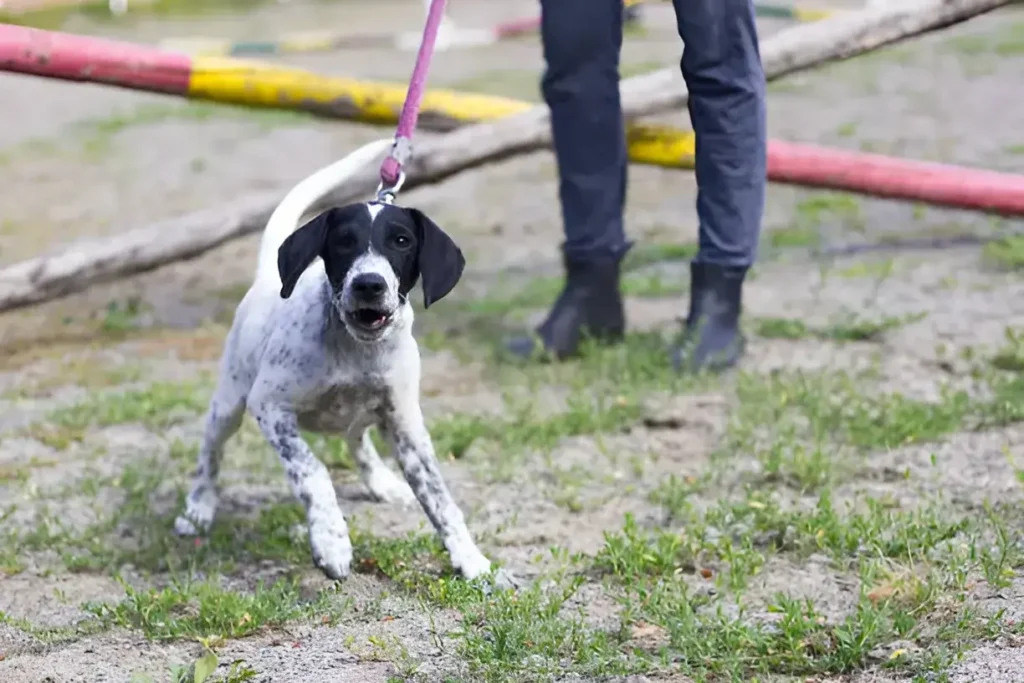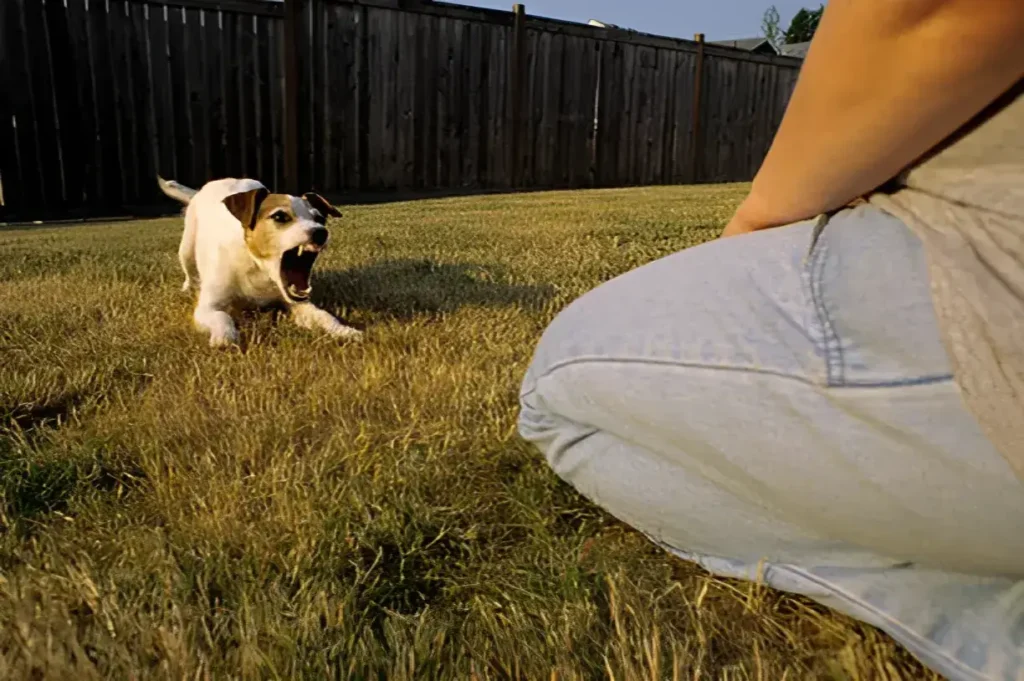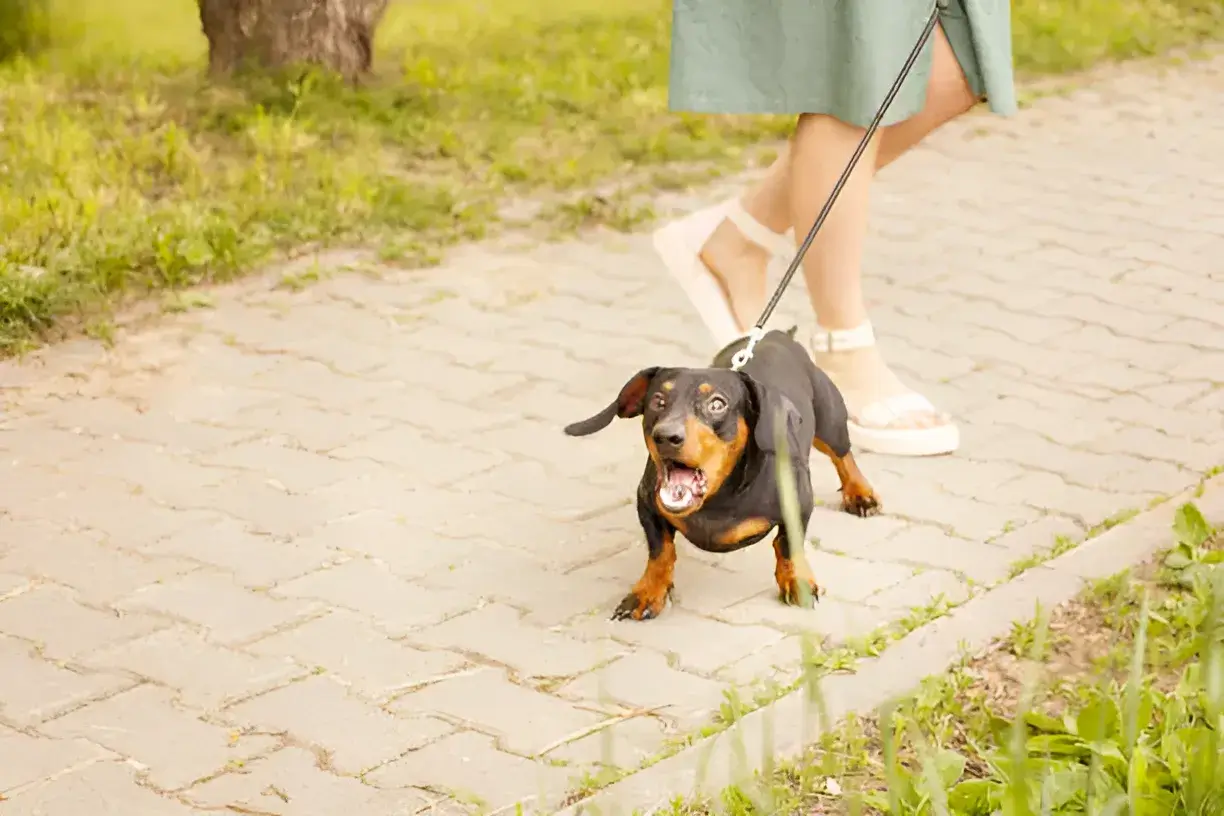The best way to stop your dog from barking at people is to understand why they bark and then choose positive training techniques that address the root cause. Common reasons dogs bark include fear, excitement, territoriality, or boredom. Using desensitization, counterconditioning, and managing your dog’s environment are your best tools.
Understand Why Does My Dog Bark at People?
Barking is how dogs communicate, but too much barking can be a problem. Here’s why your dog might bark at people:
- Feeling Scared or Anxious: New people might seem intimidating to some dogs, especially if they haven’t been socialized well.
- Protecting Their Space: Your dog might see strangers as a threat to their home or territory, making them bark to warn them away.
- Overly Excited to Greet: Dogs who love meeting people (or who want to play!) might bark enthusiastically, though sometimes this can be misinterpreted as aggression.
- Needing Attention or Stimulation: If a dog is bored or lonely, they may resort to barking to get your attention or simply to release some energy.
How to Stop the Barking: Humane and Effective Strategies

1. Identify the Triggers:
Observe your dog. Is it all people, or specific types (men, children, people with hats)? Does their body language indicate fear or playfulness?
2. Management Techniques:
These provide immediate solutions while you work on training:
- Limit your dog’s view of passersby with curtains or blinds.
- Create a safe space with a comfy bed or crate where your dog feels secure when stressed.
3. Desensitization and Counterconditioning:
This involves gradually exposing your dog to people in a controlled, positive way.
- Start with a distance where your dog doesn’t bark. Enlist a friend to help.
- Have the person remain still, then reward your dog lavishly for staying calm.
- Gradually decrease the distance over multiple sessions, focusing on your dog’s comfort level.
4. Teach Alternative Behaviors
- “Quiet” command: When your dog barks, calmly say “quiet.” When they stop, immediately reward. Repeat consistently.
- Incompatible behaviors: Teach commands like “sit” or “go to your bed” that they can’t do while barking.
5. Ignore Attention-Seeking Barking:
If your dog barks for attention, don’t give them any (even scolding!). When they’re quiet, then give them attention and play.
6. Enrichment for Boredom:
- Provide plenty of walks and playtime.
- Puzzle toys and chews can keep your dog mentally stimulated.
- Consider doggie daycare if you work long hours.
Troubleshooting Common Mistakes
- Inconsistent Commands: Use the same words and cues every time for best results.
- Giving Up Too Soon: Changing behavior takes time. Be patient and consistent.
- Accidental Rewards: Make sure no one in your household is accidentally rewarding the barking with attention or treats.
- Getting Frustrated: Yelling or scolding can worsen the problem and damage your bond with your dog. Stay positive and keep training sessions upbeat!
Puppy Training for Calm Greetings

It’s easier to prevent problem barking than fix it later! Here are proactive tips for pups:
- Lots of Positive Socializing: Getting your puppy used to a variety of people, sights, and sounds builds confidence and prevents them from being fearful later on.
- “Settle” on Command: Teach your puppy a “settle” or “calm down” cue so they have a way to relax even when exciting things are happening.
- Rewarding Good Behavior: When visitors come over, have them ignore your puppy and toss a few treats on the floor. This teaches your pup that guests mean good things!
Products that Can Help (and Those to Avoid)
- Helpful: Calming puzzle toys, white noise machines (for anxious dogs), safe and comfortable crates when used as a positive space.
- Avoid: Prong collars, shock collars, citronella spray collars – they often cause more anxiety than they address. Focus on positive reinforcement methods instead!
Creating a Calm Environment
- Soft Lighting: Harsh fluorescent lighting can make some dogs edgy.
- Soothing Music: Play calm, quiet music for dogs with anxiety issues.
- Safe Spaces: Ensure your dog has designated areas where they can retreat if feeling overwhelmed or needing quiet time.
Additional Tips:
- Don’t punish barking: This can worsen anxiety-based barking.
- Keep a positive attitude: Training takes patience! Celebrate small victories.
- Breed matters: Some breeds are naturally more vocal – be realistic with your expectations.
Knowing When to Get Help
If your dog’s barking feels uncontrollable, is paired with aggressive behavior, or if you don’t see improvement with at-home training, get professional help. A trainer or behaviorist can offer personalized advice and help you address the root of the problem.
Conclusion
Teaching your dog calmer ways to interact with people requires understanding and time. Using positive methods that focus on your dog’s well-being will create a happier, less stressful household for everyone.
The photo featured below the post headline is Credit: Lolkaphoto/istockphoto
I hope you find this post helpful and informative. If Yes’ feel free to share it with your friends!
Frequently Asked Question
My dog barks at people entering the house, what do I do?
Teach your dog to go to their bed/crate upon greeting guests, rewarding with treats.
Will a bark collar help?
Bark collars can suppress barking but don’t address the underlying cause. Positive reinforcement methods are kinder and more effective long-term.
Why does my dog bark at everything that passes by?
This could be territorial barking, boredom, or a lack of socialization. Management techniques (like limiting window views), desensitization training, and increased mental enrichment can help.
How do I stop my dog from barking at people in the house?
Start by identifying why your dog barks at people inside. Are they fearful, excited, or seeking attention? Address the root cause with desensitization, training alternate behaviors, or creating a calm environment.
How long does it take to stop a dog from barking at people?
The time it takes varies depending on your dog’s personality, the cause of their barking, and the consistency of your training. Be patient, and focus on celebrating even small bits of progress.
My dog barks at people on walks. What can I do?
1. Focus on Your Dog: Start by teaching your dog a “look at me” command, rewarding them generously with treats. Practice in quiet locations first.
2. Distance and Distraction: When you see a stranger, get enough distance that your dog doesn’t bark. Use the “look at me” command and give lots of treats for focusing on you.
3. Get Closer Slowly: As your dog improves, you can gradually start decreasing the distance between you and other people while practicing the focusing technique.
Is it normal for puppies to bark at people?
It’s common for puppies to bark at new experiences, but it’s important to start proactive training and socialization early to prevent excessive barking as they get older.
My dog only barks at certain types of people. Why?
Dogs might react based on past experiences, perceived threats, or simply unfamiliar appearances (like hats or beards). Desensitization with positive exposure can help them become more comfortable.
How to stop territorial barking?
A combination of management (limiting views), desensitization to triggers, teaching alternative behaviors (like going to their bed when they see something), and rewarding calm responses are effective approaches.
How to stop dog barking in seconds?
While there’s no instant fix, teaching a strong “quiet” command can be helpful for momentary interruptions. However, always follow this by addressing the cause of the barking for permanent results.
How to stop my small dog from barking at strangers?
Small dogs often bark due to feeling insecure. Focus on confidence-building socialization, desensitization, and teaching alternative behaviors like going to their bed when they see someone.
How to stop my dog barking at strangers in the yard?
This likely stems from territorial feelings. Manage their environment by blocking views if needed, teach them to come to you when they see someone, and reward calm behavior heavily.
My dog only barks at men with beards. How can I help them be less fearful?
Start with positive desensitization at a great distance. Have a man with a beard stand still, reward your dog for calm behavior. Gradually decrease the distance very slowly over many sessions.
My rescue dog barks nervously at new people. How can I help them feel safer?
Go slow! Let your dog observe new people from afar without pressure to interact. Use lots of treats and praise calm behavior. Avoid overwhelming situations at first.
Will neutering/spaying stop my dog from barking at people?
While neutering/spaying can reduce some hormonally-driven barking, it’s not a solution on its own. Training that addresses the root cause is still necessary.

